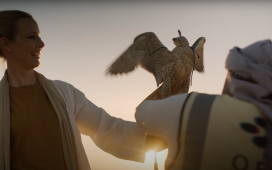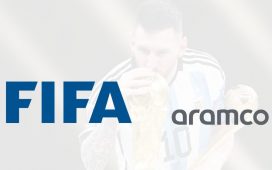
In MENA we are seeing that some multinational brands are becoming increasingly interested in ad verification. Following the brand safety and metric reporting issues that took the global ecosystem by storm, brands and agencies are more aware than ever of the need for transparent and accountable ad verification, with clear brand risk management and verified viewability metrics. These considerations are now becoming top-of-mind for several brands, due to media attention and an increased need for better education on transparency issues.
As DMS, we are making good progress to ensure brands and agencies alike are aware of the need for accountability and trust, explaining what this involves and what impact verification measures will have on ROI. Shedding light on brand safety, we are strong believers in offering brands a safe haven to engage with consumers. High-quality content is a key ingredient, and making sure it is moderated, proofed and published after an editorial approval are key processes to premium publishing. It is such processes that editors and journalist follow to deliver quality news to readers across all premium publishers.
Beyond the IAB/MRC viewability standards, we are seeing different requirements coming from brands, which can make for a confusing setting – some are asking for 100 per cent of ads in view; others are asking for video viewability metrics beyond 50 per cent and 2 seconds. At DMS, we were first to adopt the IAB/MRC standards in MENA, and we signed with MOAT more than a year ago to help us achieve those milestone goals with publishers and answer brands’ requirements in this regard.
We encourage brands and agencies to consider ad viewability as part of a wider verification solution. Rather than an isolated metric, ad viewability should be viewed as the first step to guarantee a brand’s opportunity to reach users. The ultimate goal is to understand how users engage with an ad, taking into consideration factors such as exposure duration, frequency, context and the impact
on the consumer’s ad interaction.
Last year was a challenging one for the digital advertising industry, with ad fraud and brand safety issues dominating the media headlines. Transparency within advertising has also been a repeated melody. While we have seen progress in this area with the rising importance of independent verification such as MOAT and IAS, there is still more to be done.
Take the mobile apps ecosystem as an example. Consistent viewability measurement is a nightmare for anyone working in ad tech and app development. Measurement companies validate such measurement with the big players, then brands and agencies pursue the same and apply it across the board, and suddenly publishers outside the social and search ecosystem take the hit. As such, their voice was heard and the IAB took charge and have created and made available a beta version of an open source software development kit (SDK) framework to simplify measurement in-app. This SDK creates a single measurement point that can be widely adopted and built on, and will tackle fragmentation from cross-device usage. DMS is planning to start the implementation of the IAB Open Measurement SDK once it is fully released, hopefully this June.
When it comes to brand safety, this isn’t a new problem. The possibility of an ad appearing next to undesirable or inappropriate content without human oversight has existed for a long time. This type of reputation risk was long thought of as part of the cost of doing business, just as non-viewable ads and invalid traffic were once assumed to be part of doing business in digital. The ideal approach is to examine our target audience to serve the consumer the best user experience, and we offer brands the possibility to prevent their ads appearing within content selected using negative keywords.
Brand safety is important, but advertisers shouldn’t feel a need to take drastic measures that sacrifice reach online. Marketers must understand the brand safety challenge to effectively protect the brands they represent. That includes learning what brand safety really is, and focusing on cultural trends that complicate it today, especially in MENA countries that have many cultural differences. It also means learning why the issue requires cross-industry collaboration – from marketers and publishers to social platforms, technology providers and academic experts. The three steps that should be worked on collaboratively are:
- Define brand safety for your brand, as it can be subjective;
- Refine brand safety with contextual data. A simple blacklist won’t do the job;
- Rely on experts to identify fake news. This requires human identification.
I believe the formation of the IAB GCC, of which DMS is a founding member, will help.









